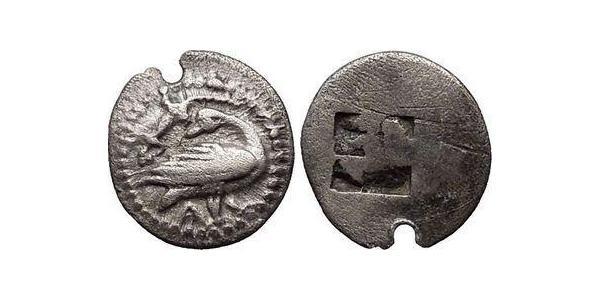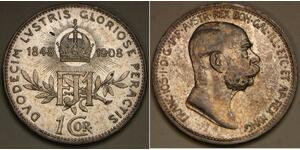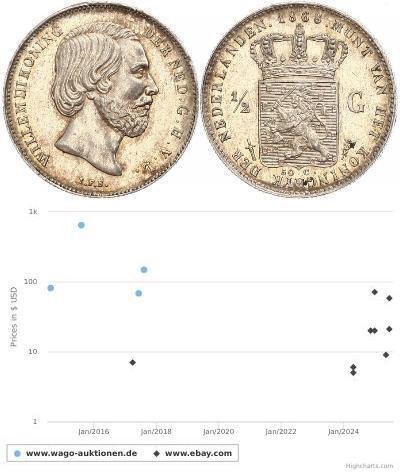[ 4439] MACEDONIA: EION Silver Trihemiobol (14mm, 0.84 gm.) circa 5th Century B.C. Reference: SNGANS 276. Goose standing right looking back, lizard above. Quadripartite incuse. Provided with certificate of authenticity. CERTIFIED AUTHENTIC by Sergey Nechayev, PhD - Numismatic Expert Eion (Ancient Greek: Ἠϊών; gen.: Ἠϊόνος) was an ancient Greek Eretrian[1] colony in Thracian Macedonia. It sits at the mouth of the Strymon River which flows into the Aegean from the interior of Thrace. It is referred to in Thucydides' History of the Peloponnesian War as a place of considerable strategic importance to the Athenians during the Peloponnesian War. Eion was occupied by the Persians in 476 BC in the aftermath of the Greco-Persian Wars. It was then captured by the Delian League in 475 BC under the leadership of the Athenian[2] general Cimon, the son of Miltiades the Younger. He captured the city by turning the course of the River Strymon so that it flowed against the city walls, causing the mud brick fortifications to melt. The inhabitants were enslaved. The capture of Eion was the beginning of a military campaign undertaken by the newly formed Delian League, whose objective was to clear the Aegean Sea of Persian fleets and pirates in order to facilitate Athenian access to the Hellespont. The nearby Athenian colony of Amphipolis was founded in 437 BC three miles up the Strymon River. The settlers, led by Hagnon, used Eion as their initial base of operations. In 424 BC, during the Peloponnesian War, Eion was the site where the Athenian commander Aristides intercepted a Persian messenger named Artaphernes. The message, which was on its way to Sparta, was a letter from the Persian king addressing previous requests made to him by the Spartans. Later in the war, in the winter of 424 BC/423 BC, the Spartan general Brasidas captured Amphipolis with his Thracian allies. When he moved against Eion, however, he was unable to overcome the Athenian defenders, who were led by Thucydides. Although he held Eion, Thucydides was subsequently ostracized by the Athenians for his failure to defend the more pivotal city of Amphipolis. Eion was later renamed by Byzantines as Chrysopolis (the city of chrysos= gold) Payment & Shipping: Will accept payments via PayPal. = MM_contentVersion;
}
else if (navigator.userAgent && navigator.userAgent.indexOf("MSIE")>=0 && (navigator.appVersion.indexOf("Win") != -1)) {
document.write('\n');
document.write('on error resume next\n');
document.write('MM_FlashCanPlay = ( IsObject(CreateObject("ShockwaveFlash.ShockwaveFlash." & MM_contentVersion)))\n\n');
}
if (MM_FlashCanPlay) {
document.write('');
document.write(' ');
document.write(' ');
document.write(' ');
document.write(' ');
document.write(' ');
document.write(' ');
document.write(' ');
document.write(' ');
document.write(' ');
document.write(' ');
}
else {
document.write(' ');
document.write(' ');
document.write(' This Vendio Gallery is best viewed with Macromedia Flash Player 6or higher. ');
document.write(' Click here to get the latestMacromedia Flash Player. ');
document.write(' ');
document.write(' ');
document.write(' ');
}
//--> Your browser does not support JavaScript. To view this page, enable JavaScript if it is disabled or upgrade your browser.
type to read more

|
Posted by:
anonymous 2015-08-18 |
Similar Coin Groups
2025-05-23
- New coin is added to 1 Corona Austria-Hungary (1867-1918) Silver Franz Joseph I ( ...
1 Corona Austria-Hungary (1867-1918) Silver Franz Joseph I ( ...
group has 25 coins / 17 prices
⇑
AUSTRIA 1 Corona 1908 - Silver 0.835 - 60 A. Reign of Franz Joseph - aUNC -2673*
2025-05-29
- Historical Coin Prices
You may be interested in ...














-300-150-AeIKqUpY7NEAAAFhroEy54Nz.jpg)







